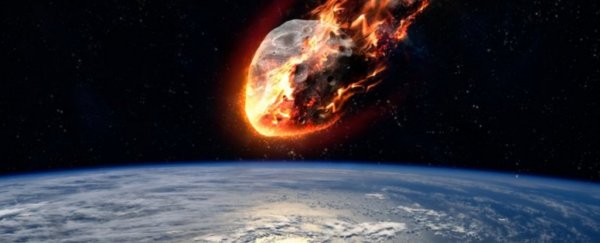Greenland is covered in one of the largest ice sheets on the planet, but underneath its frozen exterior, this landscape is more pockmarked than we once thought.
Buried beneath two kilometres of ice, researchers think they have found a second huge impact crater, hiding in the northwest corner of the world's largest island.
As scientists explore more and more of our planet, it is increasingly rare to find new impact craters, especially in icy places like Greenland or Antarctica.
In fact, before finding the first Hiawatha impact crater in November of last year, most experts just assumed that any evidence of a past impact would have been wiped away by these regions' unrelenting erosion of ice.
So it's pretty exceptional that in the space of just a few months, we have now uncovered what looks like two of these rarities, both located in Greenland.
"We've surveyed the Earth in many different ways, from land, air and space - it's exciting that discoveries like these are still possible," says co-author Joe MacGregor, a glaciologist with NASA's Goddard Space Flight Center.

The discovery was made possible through a combination of satellite images and radar data, which allowed researchers to 'see' deep under the ice.
It was here that they noticed a circular pattern, just 183 kilometres (114 miles) from the first impact crater. Measuring more than 36 kilometres wide (22 miles), the pattern was found to have similar features to its neighbouring impact crater - specifically, a flat, bowl-shaped depression, surrounded by an elevated rim and centrally located peaks.
While not as clearly defined as the Hiawatha crater, if this second impression is confirmed to be the fingerprint of a meteorite, it will be the 22nd largest impact crater ever found on Earth - three spots ahead of the Hiawatha one.
"The only other circular structure that might approach this size would be a collapsed volcanic caldera," explains MacGregor.
"But the areas of known volcanic activity in Greenland are several hundred miles away. Also, a volcano should have a clear positive magnetic anomaly, and we don't see that at all."
But even if it turns out that Hiawatha has a sibling, it's unlikely that the two craters are twins. The authors predict the second one is not only bigger, it's also older.
Analysing ice cores sampled nearby, MacGregor and his team concluded that the area had not been disturbed by a strong force in at least 79,000 years. This could mean two things: that the impact happened more than 79,000 years ago; or it happened more recently and the disturbed ice has simply flowed away.
Guessing a crater's age, however, is difficult business. In this case, researchers calculated it would have taken between a hundred thousand years and a hundred million years for the ice to erode the crater to its current shape.
"The ice layers above this second crater are unambiguously older than those above Hiawatha, and the second crater is about twice as eroded," explains MacGregor.
"If the two did form at the same time, then likely thicker ice above the second crater would have equilibrated with the crater much faster than for Hiawatha."
It's also not that unusual, statistically speaking, for two different meteorites to land so close to one another. Two sets of neighbouring craters with different ages have already been found in Ukraine and Canada, and computer models have confirmed that these events aren't that unheard of in Earth's cratering record.
"The existence of a third pair of unrelated craters is modestly surprising but we don't consider it unlikely," says MacGregor.
"On the whole, the evidence we've assembled indicates that this new structure is very likely an impact crater, but presently it looks unlikely to be a twin with Hiawatha."
This study has been published in Geophysical Research Letters.
